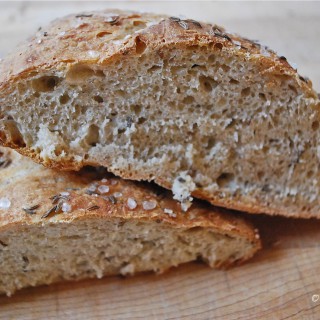Beans can ward off obesity
Beans have a positive effect on the blood sugar curve 12 hours after a meal. The best results were produced by Swedish brown beans. Beans also increase the feeling of satiety for this length of time, and the best results for this were produced by chickpeas, closely followed by brown beans. This has been shown in a new study from Lund University, which looked at the effects on health of various types of beans 11–14 hours after a meal.
“Being able to regulate appetite such a long time after a meal is of major significance for energy intake and thus prevents weight gain and obesity”, says Anne Nilsson, a researcher in applied nutrition at the Antidiabetic Food Centre, Lund University. The health benefits were registered after breakfast following a supper of beans the previous evening.
Previous studies have indicated that the consumption of beans is likely to be linked to health benefits such as a lower risk of weight gain and obesity, but the reason for this has been unclear.
“Our study shows that it is probably the specific composition of fibre in the beans that is responsible for the health benefits. Beans both have a low glycaemic index and are high in fibre, which makes them extra healthy. In addition, they also contain other healthy substances, such as polyphenols”, says Anne Nilsson.
The glycaemic index measures how blood sugar is affected straight after a meal, whereas the beans’ dietary fibre, also referred to as insoluble carbohydrate, is not broken down in the large intestine until several hours later. The beans’ fibre content and type and combination of fibre are the most important explanation for the health benefits of the beans over this longer perspective. These carbohydrates are not broken down by enzymes in the small intestine, but rather by bacteria in the large intestine, where they activate the ‘friendly’ bacteria, which can then reproduce and contribute to healthy gut flora.
“Our study shows that it is probably the specific composition of fibre in the beans that is responsible for the health benefits.”
The bacteria in the large intestine have a far greater role than just local digestion. The gut flora is also involved in the regulation of a range of important processes related to glucose and energy regulation. Signals are sent from the large intestine via nerves and hormones to the brain to indicate sugar cravings, hunger – and satiety. Among other things, the researchers observed an increase in the important intestinal hormone GLP-2. This hormone makes the walls of the intestine less penetrable to endotoxins, which can raise the risk of metabolic diseases such as obesity and insulin resistance, as well as cardiovascular disease. They also noted a reduction in the inflammation marker IL-6, while the satiety hormone PYY increased and the hunger hormone ghrelin diminished. Furthermore, they observed a raised level of hydrogen in exhaled air and a higher concentration of short-chain fatty acids in the blood, which is a sign of increased activity in the fermentation of fibre from the beans in the large intestine. The fact that bacteria in the large intestine play a major role in our health outside the intestines is becoming increasingly clear. The concept of the ‘gut–brain axis’ is used to indicate how the bacteria in the large intestine communicate directly with the brain.
Study: The study involved 16 young people who ate Swedish brown beans, red kidney beans, black beans, haricot beans or chickpeas on six occasions at 21:00. Normal white bread was included as a reference food. The following morning, they had a fasting blood test. The research subjects then ate a standard meal and repeated blood tests were taken over three hours. Aim: The researchers at the Antidiabetic Food Centre aim to generate new knowledge on preventive anti-inflammatory food concepts that can facilitate weight regulation, improve cognitive performance and reduce the risk of cardiovascular disease and type 2 diabetes. The findings could then lay the foundation for new healthy food concepts. Funding: The research was funded as part of the Antidiabetic Food Centre, which is a research consortium involving Lund University, Region Skåne and the food industry. For more information, see www.afc.lu.se.
Publication: The research has been published in PLOS ONE and was presented at a public seminar in Lund on 3 June. At the same event, researcher Juscelino Tovar presented a long-term study on the effects of a diet featuring brown beans, chickpeas and barley. Previous studies: Anne Nilsson has previously studied the link between food and cognition, and has seen that risk markers for diabetes and cardiovascular disease are related to cognitive performance even in healthy individuals. In addition, she has demonstrated the importance of diet. For instance, oily fish has a positive impact on working memory, and the blood sugar curve after a meal has an impact on working memory, concentration and attention. It is known that diabetes and other metabolic disorders lead to an increased risk of impaired cognitive function.
Published: 2014



